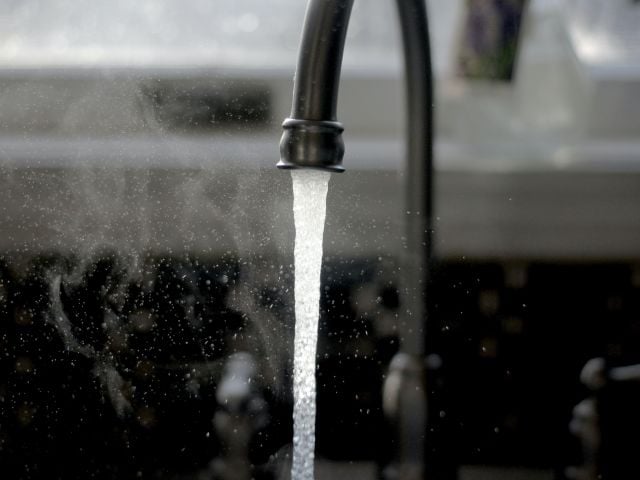WASHINGTON – A Michigan company known for releasing toxic chemicals into air and water is under criminal investigation after spilling “several thousand gallons” of liquid contaminated with the cancer-causing hexavalent chromium into the Huron River.
Tribar Manufacturing, which produces decorative trims for cars, has in the past discharged the toxic “forever chemicals” known as PFAS into the river, leading to longstanding fish-consumption advisories in nearby areas. The company, based in Wixom, Mich., has also previously been accused of an air quality violation, according to Detroit’s ABC affiliate.
In late July, the company dumped water contaminated with hexavalent chromium, also known as chromium-6, into the Wixom wastewater system, which reached the Huron River. State officials continue to recommend “no contact” with Huron River water systems as a health precaution, including swimming, drinking the water, or eating fish caught in the river.
“There’s a reason Americans don’t automatically trust their drinking water, and it’s because they’re all too familiar with a seemingly never-ending round of news stories saying it has been polluted with some hazardous chemical,” said Tasha Stoiber, Ph.D., a senior scientist at EWG. “It’s disgraceful – we all should have safe water to drink.”
Chromium-6 has been linked to cancer and other serious health issues. It can occur in nature, but is usually the product of industrial processes. It’s often used to coat metal with an anti-corrosion treatment, preserve wood, dye textiles, and in cooling towers.
The chemical gained prominence with the 2000 movie “Erin Brockovich,” about chromium-6 pollution of a small California town’s water. An EWG analysis shows the chemical contaminates the water supplies for more than 250 million Americans in Michigan and all 49 other states, and also locations in Puerto Rico, the Northern Mariana Islands and Guam.
EWG’s interactive map of chromium-6 contamination shows the toxic chemical has been detected at many locations in Michigan, including Ann Arbor. The city is downstream from Tribar’s plant and gets most of its drinking water from the river. Tests are underway to find out whether that city’s drinking water has been polluted after the Tribar discharge.
A Huron River Watershed Council planner told a local TV station, “This new contamination with hexavalent chromium really feels like we’re really being kicked while we’re down because we are still dealing with the fallout from PFAS.” Since the 1950s, the industry has used PFAS to reduce the air emissions of chromium-6 that could harm workers or people living nearby.
EWG’s 2021 Tap Water Database update showed more than 8,600 water utilities have detected chromium-6 in their water. Highly populated states report levels above health guidelines for the chemical, including California, Florida, Illinois, Michigan, Texas and New York.
Chromium-6 increased risk of some cancers in rats and mice that consumed it, the National Toxicology Program found. The chemical harmed the liver and reproductive systems, lowered body weight and delayed development of the offspring of some lab animals exposed to it. If inhaled, chromium-6 particles can cause cancer. Drinking contaminated tap water is linked to stomach cancer, liver damage, reproductive issues and harm to children’s brain development.
There is no federal limit specifically for how much chromium-6 can be in drinking water. But in 2011 California set a public health goal of 0.02 parts per billion, or ppb – a level of the chemical in water at which it is not believed to pose a significant risk to health.
The Environmental Protection Agency has a drinking water standard of 100 ppb for all forms of chromium, including chromium-6. But it was set in 1991, based on potential adverse skin reactions like allergic dermatitis, before research showed the chemicals can cause cancer. The EPA required larger utilities to test for chromium-6 between 2013 and 2015, and that is the data behind EWG’s interactive map. The European Union largely prohibits the use of hexavalent chromium.
“It is outrageous that chromium-6 is still unregulated, when so much evidence points to the serious harms it causes,” said Melanie Benesh, EWG’s vice president for government affairs. “The Environmental Protection Agency must do far more to protect human health from toxic chemicals by setting a health-protective legal limit and providing resources to help clean up the most contaminated water systems.”
What you can do
Consumers can find out whether the chemical is in their own water by consulting EWG’s Tap Water Database. Or visiting EWG’s interactive map and searching for their ZIP code.
For those who discover the contaminant in their water, EWG recommends a home water filter. Ion-exchange pitcher filters and under-sink reverse osmosis filters both remove chromium-6.
The EPA’s existing national tests for chromium-6 didn’t include private wells, so the scope of contamination is unclear. People who rely on private wells living near a system that has tested high for the chemical should install a filter or consider getting it tested.
###
The Environmental Working Group (EWG) is a nonprofit, non-partisan organization that empowers people to live healthier lives in a healthier environment. Through research, advocacy and unique education tools, EWG drives consumer choice and civic action.



